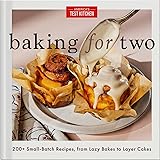Many home cooks find themselves overwhelmed when standing in the olive oil aisle, faced with countless bottles and labels. In fact, a significant portion of consumers struggle to differentiate high-quality products from lesser ones, leading to common purchasing frustrations. The video above offers fantastic initial guidance on how Italians actually buy olive oil, highlighting key indicators of authenticity and freshness. This article will expand on those crucial tips, providing deeper insights to help you make truly informed decisions when buying olive oil.
Understanding Extra Virgin Olive Oil (EVOO) for Quality Purchases
The first and most critical rule for buying olive oil is to always choose “Extra Virgin Olive Oil.” This designation is not merely a marketing term; it signifies the highest grade of olive oil available. Extra Virgin means the oil has been mechanically extracted without chemicals, often through a process called cold pressing, ensuring the olives’ natural properties are preserved.
This gentle extraction method maintains the oil’s beneficial antioxidants, which are compounds known to support overall health. These antioxidants contribute to the distinct flavor profile and impressive health benefits associated with a high-quality extra virgin product. Opting for EVOO is your initial step towards selecting a premium and healthful culinary ingredient.
The Essential Role of Dark Bottles in Preserving Olive Oil
Once you have decided to always buy extra virgin olive oil, its packaging becomes the next important consideration. As the video explains, olive oil is highly sensitive to light exposure, which can quickly degrade its quality. Light, especially ultraviolet light, triggers oxidation, effectively destroying the valuable antioxidants and compromising the oil’s flavor and nutritional integrity.
Therefore, always choose olive oil packaged in a very dark glass bottle or an opaque tin. This protective packaging acts as a shield, preventing harmful light from reaching the oil and preserving its freshness. Proper storage at home, away from direct sunlight and heat, further extends the shelf life of your premium extra virgin olive oil.
Decoding Italian Olive Oil Certifications: DOP and IGP
For an extra layer of assurance regarding quality and authenticity, look for specific certifications such as DOP or IGP on the label. These acronyms represent rigorous European Union standards that guarantee the product’s origin and production methods. DOP stands for Denominazione d’Origine Protetta (Protected Designation of Origin), while IGP means Indicazione Geografica Protetta (Protected Geographical Indication).
A DOP certification indicates that the entire olive oil production process, from olive cultivation to bottling, occurred within a specific geographical region, adhering to strict traditional methods. Examples include DOP Umbria or DOP Terra di Bari from Italy. IGP is slightly less stringent, requiring only a part of the production process to take place within the specified region, ensuring a link to its geographical origin.
These certifications are a strong indicator that the olive oil is made from high-quality olives originating from a single, specific area. They provide valuable insight into the product’s heritage and often signify a superior, authentic Italian olive oil. Understanding these labels empowers consumers to choose genuine regional specialties.
The Importance of Freshness: Harvest and Expiry Dates
Just like any fresh fruit juice, the fresher your olive oil, the better it tastes and the more nutrients it retains. Olives are indeed a fruit, and olive oil is their juice, so freshness is paramount. Checking the expiry date is crucial; ideally, it should be at least 18 months into the future when you purchase it. This extended timeframe suggests that the olives were harvested and processed relatively recently.
Beyond the expiry date, some producers also include a “harvest date” on the label, which offers even greater clarity on the oil’s age. Aiming for an olive oil that was harvested within the last year ensures you are getting a product at its peak flavor and nutritional potency. Fresh olive oil delivers vibrant, complex notes, a stark contrast to stale or rancid alternatives.
Beyond the Basics: Tasting Notes and Usage Tips for Buying Olive Oil
Once you’ve mastered the basics of buying olive oil, consider developing your palate to appreciate its diverse flavors. High-quality extra virgin olive oil offers a spectrum of tasting notes, from grassy and peppery to fruity and buttery. A slight peppery sensation at the back of the throat is actually a positive sign, indicating the presence of beneficial polyphenols.
Conversely, avoid any olive oil that smells or tastes greasy, metallic, or crayon-like; these are signs of rancidity. Rancid olive oil has lost its health benefits and desirable flavors, making it unsuitable for culinary use. By understanding these sensory cues, you can further refine your ability to choose exceptional olive oil.
When you find a high-quality extra virgin olive oil, use it wisely. Its delicate flavors are best appreciated in uncooked applications, such as drizzled over salads, soups, pasta, or as a dipping oil for crusty bread. While it can be used for cooking, its low smoke point means it’s less ideal for high-heat frying, where some of its beneficial compounds might degrade. Making an informed choice when buying olive oil enhances every meal.











